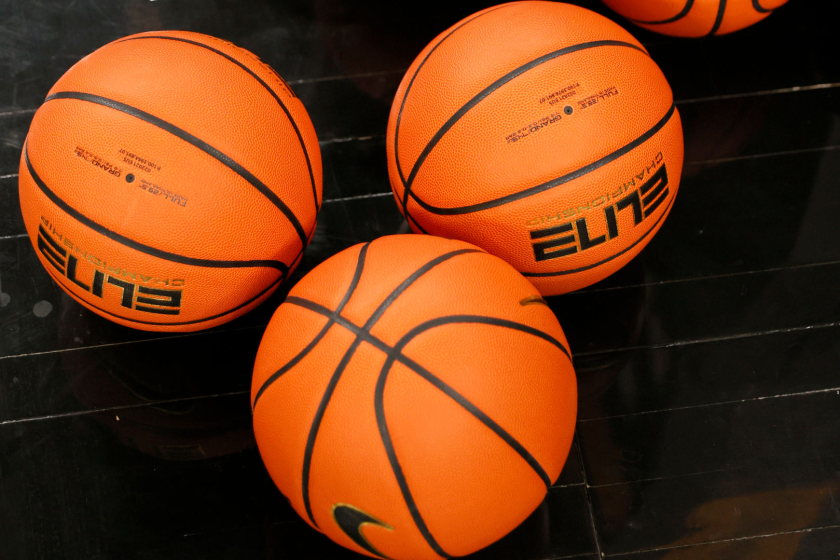These Waves Too Crowded for Comfort
- Share via
They’re the best surfers in the world, but that doesn’t mean they can’t be tripped up by a slick foe, a sly move or a slip of judgment.
Members of the World Championship Tour are used to competing in the man-on-man format. After an opening three-man heat where no one loses and the winner skips a round, it becomes a series of one-on-one dogfights.
One guy wins, one guy gets to change his airline reservations.
The U.S. Open and other World Qualifying Series events use a four-man format, with two surfers advancing and two eliminated until the final, when surfers paddle out with a chance to finish anywhere from first to fourth.
The WCT tour also uses a wave-priority system. The first surfer to paddle out and touch a priority buoy--or cross an imaginary line extending from a buoy as was the case in last week’s Bluetorch Pro at Huntington Beach--has his pick of the next wave.
In the four-man format, priority is determined by which surfer has the best position--closest to the peak--or, in some cases, who’s up and riding first. Surfers in WQS contests can ride the same wave, as long as they go in opposite directions.
Oxnard’s Tim Curran, ranked No. 19 in the world and seeded into the round of 64 at the U.S. Open, got a quick refresher course in four-man heat surfing Friday morning . . . and a rapid exit from the event in the process.
A southwest swell was producing some of the best conditions of the last two weeks, when Curran and Australia’s Trent Munro were paddling for the same glassy peak. Curran yelled to Munro, asking which way he was intending to go.
“He didn’t say anything, but I thought the wave was a good left and he’d go that way, he was paddling like he was going to go left,” Curran said. “So I went right.”
So did Munro and Curran was called for interference, a virtual death penalty since Curran would be scored on only his two best waves instead of the usual three.
“It looked like they were going to split the peak,” said Assn. of Surfing Professionals judge Midget Smith. “Tim never looked back and I don’t think he even knew Trent was behind him.”
After the wave, Curran, universally liked by his peers because of his low-key good nature, paddled over and splashed Munro.
“I just said, ‘Is that how you’re going to make the [WCT] tour? Going behind guys?”’ Curran said. “He’s a real good surfer. He doesn’t need to do that stuff.”
Laguna Beach’s Pat O’Connell, like most of the top pros, is not a fan of the four-man format.
“I really dislike all the hassling going on,” said O’Connell, the No. 39-ranked surfer on the WCT who finished second in his heat to advance to today’s Round of 32. “I mean we’ve all been through it and we surf three-man heats in the first round, so it’s not completely foreign to us. But I think it takes away from the surfing.”
DOUBLE WHAMMY
With five seconds remaining in their heat, Cardiff’s Taylor Knox and Australia’s Danny Wills tried to catch the same wave, collided during the takeoff and ended up getting a double interference.
As a result, San Juan Capistrano’s David Pinto, a graduate of Capistrano Valley High, slipped past both to advance along with heat winner Chris Drummy, also of San Juan Capistrano.
After a half-hour discussion with Knox--during which he tried unsuccessfully to explain how the judges arrived at their decision--ASP head judge Perry Hatchett was asked to sum up what transpired in the judges’ tower.
“When two surfers are in the same peak, the first thing that must be established is whether the right or the left has superior scoring potential,” he said. “The second thing to establish is who has the right way of way.
“The majority of the judges felt both surfers were in the middle of the peak with the opportunity to split the wave fairly. A couple of the judges thought Taylor was the aggressor because he was angling slightly toward Danny as he paddled and initiated the contact. Others thought Taylor had inside position and Danny should have given way, so we ruled it a double interference.”
HERE’S A GREAT IDEA
Not wanting to miss out on all the union organizing going on in surfing these days, the International Women’s Surfing group was formed this week, a female version of the men’s World Surfing Professionals.
The women want to establish a tour that includes about two-thirds women-only events and one-third WCT contests that feature both men and women.
It’s not clear who might want to sponsor these stand-alone events.
Have the women pros noticed that much of the crowd at Huntington Beach goes around to the other side of the scaffolding to pick up free stickers from the sponsors’ expo when the women’s heats begin?
If IWS pulls this off, they’ll be standing alone, all right, alone on the beach during their new contests.
More to Read
Go beyond the scoreboard
Get the latest on L.A.'s teams in the daily Sports Report newsletter.
You may occasionally receive promotional content from the Los Angeles Times.










